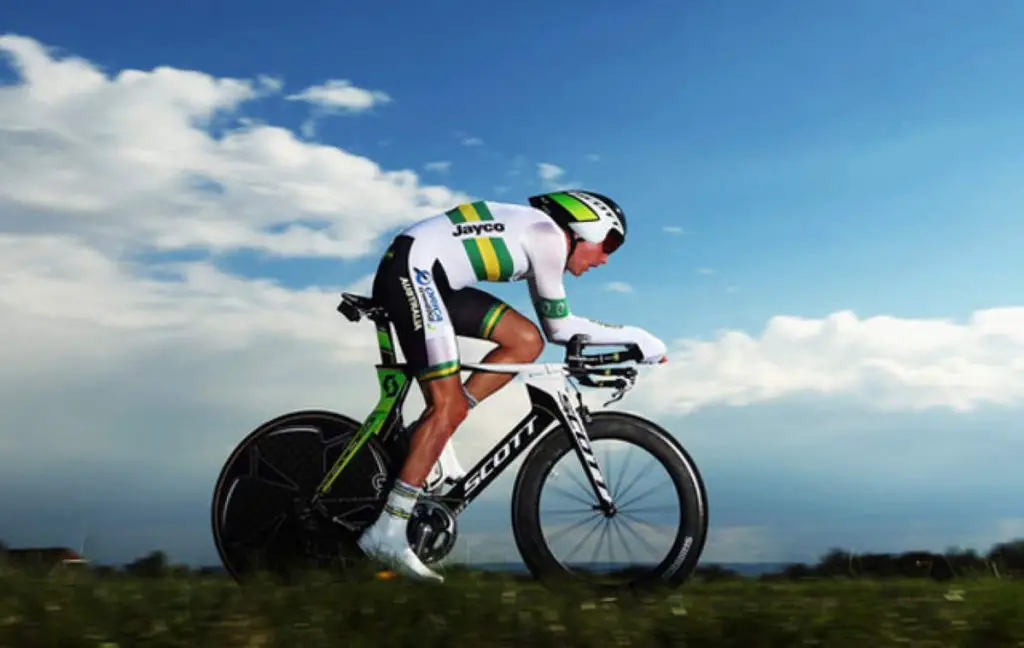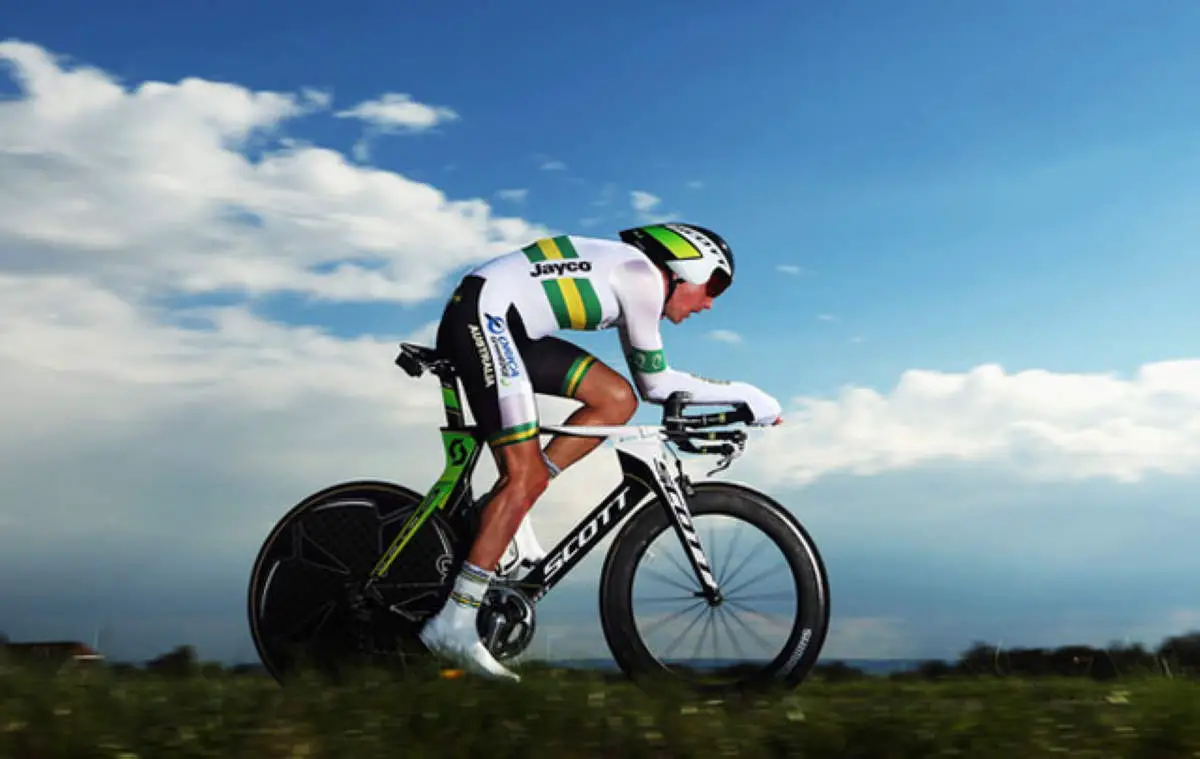Australian Team Orica-GreenEDGE published another good video on their youtube channel. Luke Durbridge, 2011 Under 23 World Time Trial Champion and Australia’s National Time Trial Champion for the last 2 years (plus 2011 Under 23 National Time Trial Champion) revealed their top five Time Trial tips.
For a quick summary, here are Durbridge’s time-trialing tips below:
Top 5 Time Trial tips
- Be toughest.
- Position on the bike.
- Technique.
- Know your lactate threshold. The lactate threshold is the power limit that you can hold for an hour. Test and learn your lactate threshold.
- Train a lot.
In fact, Durbridge doesn’t say a lot with numbers 5 and 1. But Number 4 is a good point, and I think it needs a bit further explanation.
The lactate threshold
In simple words, the lactate threshold, also known as the aerobic threshold (AeT) is “the maximal effort or intensity that an athlete can maintain for an extended period of time with little or no increase in lactate in the blood. It is an effort or intensity and not a specific lactate level.”
In more technical terms, the lactate threshold or the lactate inflection point (LIP) is the exercise intensity at which the blood concentration of lactate and/or lactic acid begins to increase exponentially. It is often expressed as 85% of maximum heart rate or 75% of maximum oxygen intake. When exercising at or below the lactate threshold, any lactate produced by the muscles is removed by the body without it building up.
is the exercise intensity at which lactate (more specifically, lactic acid) starts to accumulate in the bloodstream. Over this limit, lactate is produced faster than it can be removed (metabolized) in the muscle. When exercising below or at the LTS intensity any lactate produced by the muscles is removed by the body without it building up.
As Durbridge says the lactate threshold is the limit of your sustainable power output. Lactate threshold usually measured in watts.

Why is power at LT so important? Suppose a rider named Mick generates 300 watts at LT while his rival, Rod, puts out 250. On a race’s early hills, Mick pushes the pace at an effort equal to 280 watts. He’s still under his LT, riding hard but in control. To keep up, Rod has to go over his LT and into oxygen debt. On the last and deciding climb, guess which rider will still have something left.
Accurately measuring the lactate threshold involves taking blood samples (normally a pinprick to the finger, earlobe or thumb) during a ramp test where the exercise intensity is progressively increased. Measuring the threshold can also be performed non-invasively using gas-exchange (Respiratory quotient) methods, which requires a metabolic cart to measure air inspired and expired.
Although the lactate threshold is defined as the point when lactic acid starts to accumulate, some testers approximate this by using the point at which lactate reaches a concentration of 4 mM (at rest it is around 1 mM).
But you can “predict” your lactate threshold without an expensive test. Note that it’s not 100% accurate.
From 29 Pro-Cycling secrets for Roadies:
First, it helps to have a heart monitor with an average heart rate function. Try to borrow one if your model doesn’t have this feature. You can use a non-averaging monitor, but you’ll have to watch it as you ride and estimate its average reading during the test. This won’t be as accurate. Warm-up thoroughly, then ride for 30 minutes as hard as you can without bogging down and slowing markedly in the last 10 minutes. It’s better to start a notch easier, then pick up the intensity in the last half.
Your average heart rate for the 30 minutes will be a close approximation of your LT.
Sources
- What is the lactate threshold? on lactate.com
- Lactate threshold on Wikipedia
- Top 18 fastest Paris-Roubaix editions - April 7, 2024
- Col de Tourmalet [Amazing photo from the 1953 Tour de France] - January 11, 2024
- Bernard Hinault and Francesco Moser, 1981 Paris-Roubaix - December 8, 2023
